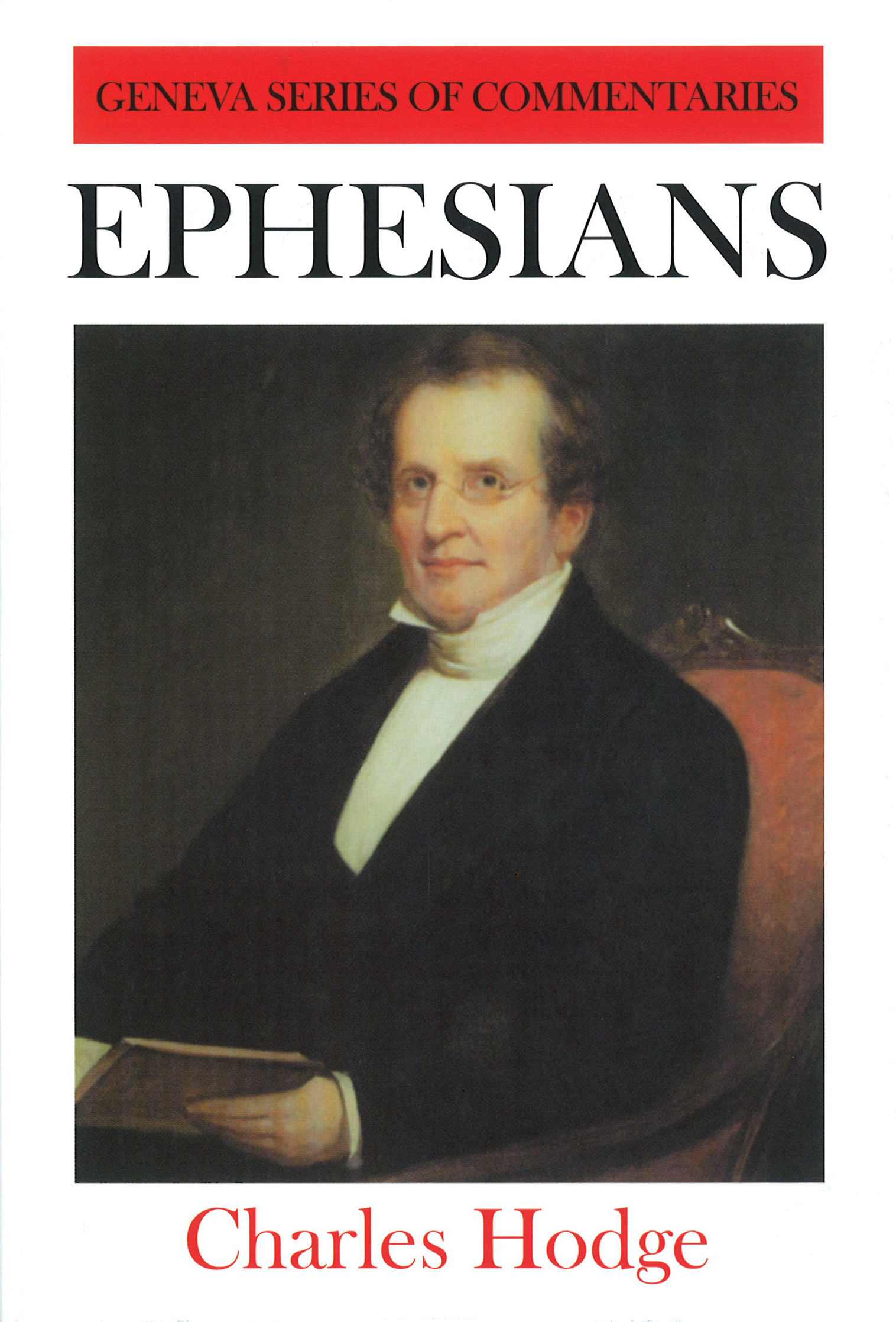Galatians
| Weight | 0.71 kg |
|---|---|
| Dimensions | 22.3 × 14.3 × 3.3 cm |
| ISBN | 9780851518046 |
| Binding | Cloth-bound |
| Format | Book |
| Page Count | 488 |
| Series | Geneva Series of Commentaries |
| Scripture | Galatians |
| Original Pub Date | 1853 |
| Banner Pub Date | Jul 1, 2001 |
Book Description
The expositions of John Brown (1784-1858) are unusually helpful to all kinds of readers. Spurgeon said in his Commenting and Commentaries, ‘Brown is a modern Puritan of the utmost value.’ The volume on Galatians is one of the scarcest books in the market.’ As a theological professor, Brown was strongly convinced that his students’ view should be ‘not only consistent with, but derived from a careful exegesis of the ‘words which the Holy Ghost teacheth’…it has been my sincere desire to bring out of the inspired words what is really in them, and to put nothing into them that is not really there.’ But as the pastor of a congregation, Brown was also anxious that his expositions should edify all Christians and not only instruct students. As a result his commentaries are unusually helpful to all kinds of readers.
Table of Contents Expand ↓
| I.-ANALYSIS. | ||
| PROLEGOMENA. | ||
| I. | Of the Persons to whom the Epistle is addressed | 1 |
| II. | Of the Occasion of the Epistle | 3 |
| III. | Of the Subject of the Epistle | 3 |
| IV. | Of the Date of the Epistle, and the place from which it was Written | 5 |
| V. | Of the Genuineness of the Epistle | 6 |
| VI. | Of the General Character of the Epistle | 10 |
| VII. | Of the Division of the Epistle | 11 |
| VIII. | Of the Interpreters of the Epistle | 12 |
| PART I. | ||
| INSCRIPTION OF THE EPISTLE. | ||
| GAL. I. 1-5. | ||
| I. | The Author | 17 |
| 1. His Name | 17 | |
| 2. His Office | 18 | |
| 3. His Associates | 22 | |
| II. | The Persons addressed-the Churches of Galatia | 23 |
| III. | The Greeting | 24 |
| 1. A Prayer | 24 | |
| 2. A Statement | 25 | |
| 3. A Doxology | 33 | |
| PART II. | ||
| INTRODUCTION TO THE EPISTLE. | ||
| GAL. I. 6-10. | ||
| I. | Introductory Remarks | 36 |
| II. | The Change which had taken place among the Galatians | 38 |
| 1. The fact | 38 | |
| 2. The Apostle’s feelings in reference to the fact | 42 | |
| 3. The cause of the fact | 43 | |
| III. | The manner in which Corrupters of the Gospel ought to be regarded | 44 |
| IV. | The Apostle’s Defence of himself against the Charge of being a Man-pleaser | 48 |
| PART III. | ||
| THE APOSTLE’S HISTORICAL DEFENCE OF HIMSELF AND OF HIS OFFICE. | ||
| GAL. I. 11 – II. 21. | ||
| I. | Introductory Remarks | 53 |
| II. | The Thesis to be proved, “that he was a Divinely-taught, Divinely-authorised Apostle” | 55 |
| III. | Historical Proof of the Thesis | 59 |
| 1. His character as a Jew | 59 | |
| 2. His conversion and call | 61 | |
| 3. His conduct in consequence of his conversion | 63 | |
| (1.) He “conferred not with flesh and blood” | 63 | |
| (2.) He did not go immediately to Jerusalem | 63 | |
| (3.) He went into Arabia | 64 | |
| (4.) He returned to Damascus | 64 | |
| 4. Three years after, he went to Jerusalem to become acquainted with Peter; remained only three days, and saw only two of the Apostles | 64 | |
| 5. He went then into the regions of Syria and Cilicia, being personally unknown to the Churches of Judea | 66 | |
| 6. He visited Jerusalem again after an interval of fourteen years | 69 | |
| (1.) He went up by revelation | 70 | |
| (2.) He communicated to the Apostles his mode of preaching the Gospel among the Gentiles | 71 | |
| (3.) He received from the Apostles the most unequivocal acknowledgment of his qualifications, call, and authority, as an Apostle | 76 | |
| 7. His reproof of Peter for dissembling at Antioch, and his assertion of the true Gospel | 81 | |
| PART IV. | ||
| THE APOSTLE’S DEFENCE OF HIS DOCTRINE. | ||
| GAL. III. 1 – IV. 1-7. | ||
| I. | Introductory Remarks | 102 |
| II. | The Apostle’s Astonishment, Displeasure, and Sorrow, at the Change in the Sentiments of the Galatians | 104 |
| III. | Argument from their own Experience | 109 |
| IV. | Argument from the History of the Justification of Abraham | 114 |
| V. | Argument from the Promise to Abraham | 120 |
| VI. | Justification by the Law in the nature of things impossible | 123 |
| VII. | Justification by Law inconsistent with Scripture | 125 |
| VIII. | Redemption from the Curse of the Law necessary for Justification both to Jews and Gentiles | 128 |
| IX. | Free Justification by believing secured in a ratified Divine Arrangement which cannot be disannulled by the Law-a subsequent Divine Arrangement | 140 |
| 1. The Thesis stated and proved | 140 | |
| 2. Design and Mode of giving of the Law | 148 | |
| 3. The Law not contrary, but subservient, to the Promise | 162 | |
| 4. State of the Church under the Law | 170 | |
| 5. State of the Church after “faith has come” | 176 | |
| 6. Figurative illustration of these two states | 182 | |
| (1.) The figure | 184 | |
| (2.) The application of the figure | 187 | |
| (a.) The Church’s minor state | 187 | |
| (b.) The state of “Mature Sonship,” into which the Church has been introduced | 191 | |
| (c.) The means by which this favourable change was effected | 193 | |
| (d.) Consequence and proof of this favourable change of condition | 198 | |
| PART V. | ||
| THE APOSTLE’S EXPOSTULATIONS WITH AND WARNING OF THE GALATIANS. | ||
| GAL. IV. 8 – V. 12. | ||
| I. | Introductory Remarks | 204 |
| II. | The Apostle shows the Galatians that they were in danger of subjecting themselves to a bondage similar to that from which they had been delivered | 206 |
| III. | The Apostle reminds them of the circumstances of their Conversion, and shows them that nothing had occurred that should have changed their sentiments towards either him or his teaching | 210 |
| IV. | The Apostle exposes the unworthy acts of the Judaising Teachers | 218 |
| V. | The Apostle expresses his deep anxiety for them, and his wish to be present with them | 225 |
| VI. | Allegorical Illustration | 228 |
| 1. Introduction | 229 | |
| 2. The Allegory | 230 | |
| 3. The Allegory explained | 230 | |
| 4. The Allegory extended and explained | 238 | |
| 5. The Allegory practically improved | 248 | |
| VII. | The Course the Galatians were following-an implicit Renunciation of Christianity and its blessings | 256 |
| VIII. | Additional considerations fitted to rouse the Galatians to serious consideration | 270 |
| 1. They had been arrested in the course they had well begun-Why? | 270 | |
| 2. The “persuasion” which had induced them to change had not come from Christ | 272 | |
| 3. The evil was likely to increase | 272 | |
| 4. The Apostle still hoped well of them | 273 | |
| 5. Their troublers would be punished | 275 | |
| 6. The obvious falsehood of the suggestion, that the Apostle had become a preacher of circumcision | 276 | |
| 7. The Apostle’s wish that they who troubled the Galatian converts might be “cut off” | 279 | |
| PART VI. | ||
| PRACTICAL INJUNCTIONS. | ||
| GAL. V. 13 – VI. 10. | ||
| I. | Caution against the Abuse of Liberty | 283 |
| II. | An Exhortation to “Serve one another in Love,” supported by Motives | 286 |
| 1. Love is the fulfilment of the Law | 287 | |
| 2. Evil consequences of an opposite temper and conduct | 289 | |
| III. | A General Exhortation to “Walk in the Spirit” as the best means of obtaining Dominion over the Lusts of the Flesh | 291 |
| IV. | Particular Exhortations to certain varieties of “Walking in the Spirit” | 313 |
| 1. Caution against vain-glorying | 313 | |
| 2. Duty of “the Spiritual” to those “overtaken in a fault” | 315 | |
| 3. Exhortation to bear one another’s burdens | 323 | |
| V. | Caution against Over Self-Estimation | 326 |
| VI. | The Duty of the Galatians to support their Teachers | 331 |
| VII. | Caution against mistake in reference to the connection between present Character and Conduct, and future Punishment or Reward | 335 |
| VIII. | Exhortation to Well-doing, and Caution against becoming weary in it | 342 |
| PART VII. | ||
| POSTSCRIPT. | ||
| GAL. VI. 11-18. | ||
| I. | Introductory Remarks | 351 |
| II. | The Apostle’s remark that his Letter was Autograph | 354 |
| III. | Unprincipled Conduct of the Judaising Teachers | 356 |
| IV. | The Apostle’s determination to glory only in the Cross of Christ | 363 |
| V. | The Crucifixion of the World to the Apostle, and of the Apostle to the World, by the Cross of Christ | 370 |
| VI. | The Essence of Christianity again stated | 376 |
| VII. | The Apostle’s Prayer for all who possess the Essential Element of Christianity, and act on it | 381 |
| VIII. | An injunction to cease to harass the Apostle, as he had been harassed by the Judaisers and their followers | 383 |
| IX. | Concluding Benediction | 385 |
| Remarks on the Subscription | 387 | |
| APPENDIX. | ||
| A. | Calvin’s Exposition of Gal. iv. 1-7 | 389 |
| B. | Period of the Appearance of the Messiah | 393 |
| C. | Elements of Christianity | 398 |
| D. | Remarks on the principle of the Support of the Christian Ministry, stated Gal. vi. 6 | 400 |
| E. | Opposition of the Natural Mind to the peculiar doctrines of Christianity, especially the doctrine of the Cross | 404 |
| F. | Practical Power of Christian Truth | 407 |
| G. | Tendency of Man to rest in a mere External Religion | 410 |
| H. | Paul’s Mode of considering Judaism and Christianity in their various relations. | 412 |
| ADDENDA. | ||
| INDEX. | ||
| 1. Principal Matters | 435 | |
| 2. Hebrew Words or Phrases explained | 439 | |
| 3. Greek Words or Phrases explained | 439 | |
| 4. Authors quoted or referred to | 442 | |
| 5. Passages of Scripture quoted or remarked on | 445 | |
| II.-TABLE FOR FINDING OUT THE EXPOSITION OF ANY VERSE OR CLAUSE OF THE EPISTLE. |
Related products

Description
This commentary is a masterpiece of exposition and heart-warming reading. Intellectually it is of the highest standard, but it is also of the deepest experimental warmth’—Gospel Magazine. 488pp.

Description
This commentary is a masterpiece of exposition and heart-warming reading. Intellectually it is of the highest standard, but it is also of the deepest experimental warmth’—Gospel Magazine. 488pp.



Testimonials
Submit your testimonial
There are no testimonials yet, would you like to submit yours?